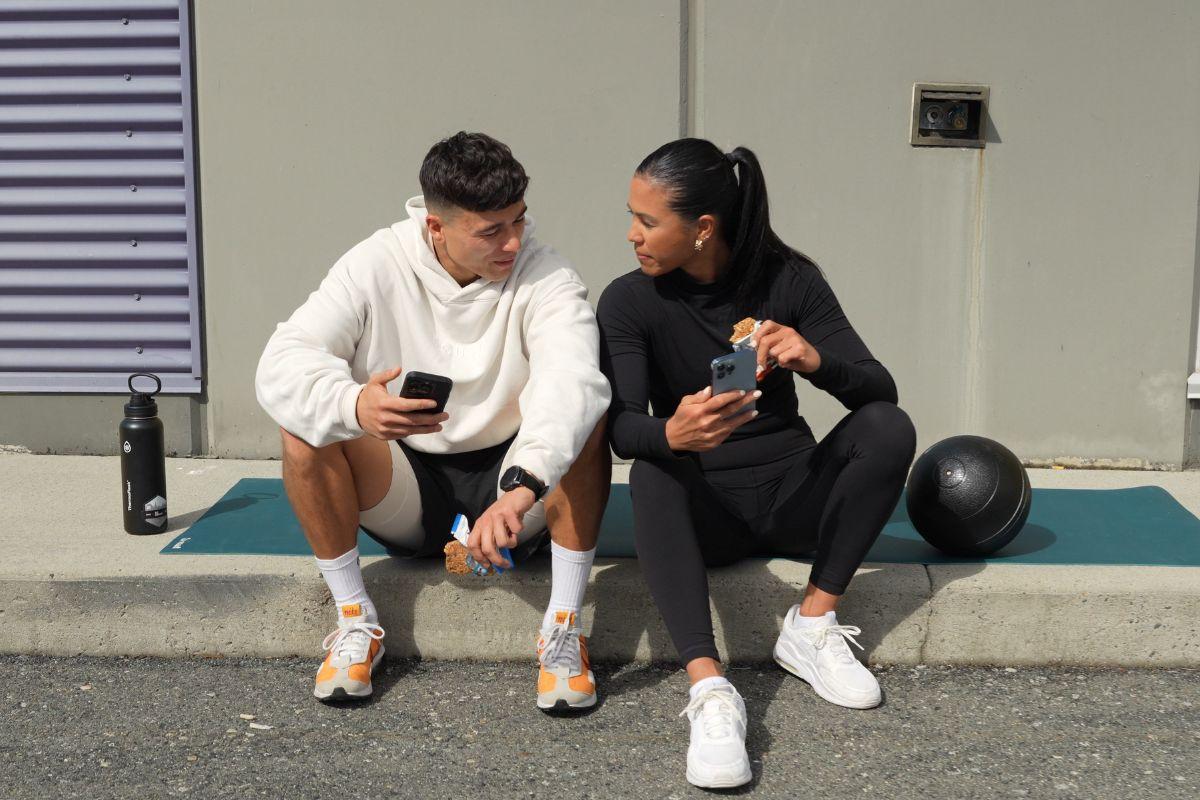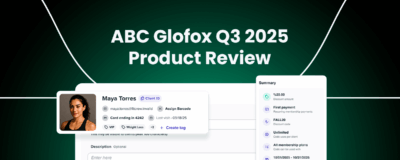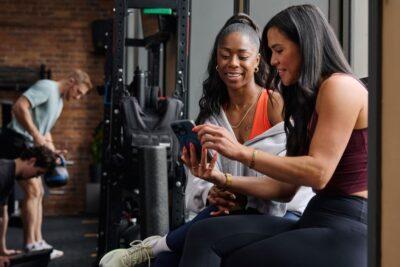Remember when exercise was actually fun? When did chasing our friends and climbing trees turn into workouts that feel like a chore? Gamification in fitness brings back the fun, turning every rep and ride into a challenge you actually want to do.
Gamification taps into our natural drive to achieve and compete. Through challenges, rewards, and leaderboards, gamification fitness apps like Strava and even your local spin studio are putting gamification to work.
Give your members more than just a good HIIT burn—put the fun back in movement.
Game on!
The Science Behind Fitness Gamification and Motivation
Gamification works because it taps into our brain’s reward system. Points, badges, and leaderboards make workouts more enjoyable and help build healthy habits. But don’t take our word for it—let’s see what science has to say.
How gamification boosts motivation
Studies show that gamification in fitness motivates people in 3 main ways:
- Progress feedback: Rings, badges, or progress bars release dopamine, the brain’s feel-good chemical. This makes workouts more fun and keeps members chasing the next milestone.
- Micro-wins: Breaking big goals into small wins, like maintaining a streak, keeps motivation high and habits strong.
- Social accountability and community: Friendly competition makes people push harder. Working out with others or comparing progress adds fun and boosts effort.
When you incorporate gaming features into your gym, you’re kick-starting motivation from the get-go. You activate higher engagement, and set the stage for long-term habits.
📕 Get the eBook: The Customer Engagement Playbook for Your Fitness Business
Key Gamification Elements in Fitness
Below, we show how popular gamification fitness apps put these elements to use. Borrow these ideas for your studio to scale up the fun and the revenue!
Points and in-app currency
Members earn points for workouts, steps, or logging nutrition. These points can be used for prizes or rewards.
Examples:
- BetterPoints rewards users for healthy behaviors with points they can redeem for prizes.
- EveryMove allows users to convert points into real-world rewards or charitable donations.
Pro tip: Use your branded studio app to convert member activities into merch or free class credits.
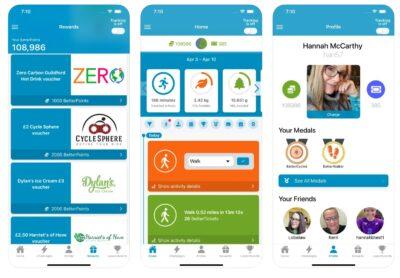
Here’s a sneak peek of the BetterPoints user experience.
Badges and achievements
Digital badges or trophies mark milestones like hitting 100 miles, completing a challenge, or clocking a personal best.
Examples:
- Fitbit awards badges for reaching step goals, climbing floors, or maintaining streaks.
- Lifesum uses badges to celebrate milestones in nutrition and fitness tracking.
Pro tip: Track and reward attendance and milestones using our analytics tools.
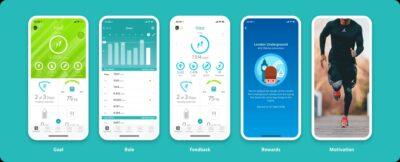
Fitbit has nailed gamification for its users.
Streaks and progress bars
Showing how many days you’ve maintained a habit—AKA a streak—taps into our drive to avoid losing progress we’ve worked so hard on. If you’ve already run for 25 days, you have to make it to 30!
Examples:
- NikeRunClub tracks running streaks, rewarding users for running consistently.
- MyFitnessPal uses progress bars to show a user’s progress towards their daily goals. It tracks calorie intake, macronutrient balance (protein, carbohydrates, and fat), and water consumption.
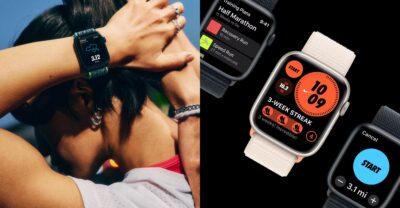
Nike understands gamification and has leveraged it with its Run Club app.
Challenges and quests
Help people break fitness into fun, achievable goals with solo challenges or themed missions.
Examples:
- DietBet encourages users to join themed weight-loss competitions with friends.
- NikeRunClub offers various running individual and community-based challenges. These motivate users to reach specific goals, such as running a certain number of miles in a month or completing a given distance.
Pro tip: Use push notifications to announce challenges or spotlight top participants.
🧠 Need More Ideas? 11 Fitness Challenges to Keep Members Coming Back
Leaderboards and social competition
Leaderboards, like you see on live professional sports broadcasts, tap into social motivation. Users can easily compare performance with friends or within communities.
Examples:
The Customer
Engagement Playbook
for Your Fitness
Business
Discover more - Run an Empire has players compete against each other on leaderboards, ranked by the total points they have accumulated. This encourages competition and motivates players to expand their empires.
- Strava uses leaderboards to rank athletes based on their performance on specific sections of roads or trails.
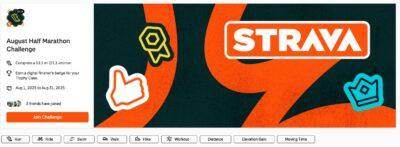
Strava’s gamification elements give huge benefits to its users.
Immersive stories
Some apps go a step further (see what we did there? 😉) by weaving fitness into storytelling.
- Zombies, Run! adds a post-apocalyptic narrative to running, where each workout helps users unlock new missions.
- Walkr turns walking into an interstellar adventure where your steps power a spaceship exploring the galaxy.
Gaming elements are as fun as they are strategic. And by tapping into behavioral psychology, these apps are making exercise truly irresistible.
Walkr turns your daily neighborhood walk into a fun adventure!
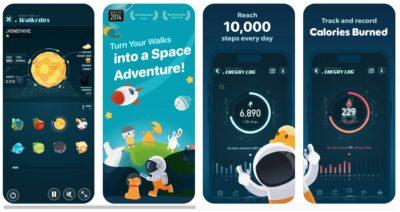
_____________
“It is very hard to influence behavior, but [if] everyone gets in this self-motivation phase and they motivate themselves, I no longer have to influence their behavior outside of the gym.” – Victoria Thomas, founder/owner, JourneyFit
_____________
Benefits of Gamification for Fitness Enthusiasts
Gamification pulls members in, helps them stick to their plan, and leads to better results. But it’s not just reserved for apps—gamification can help gyms and fitness studios, too! It can:
#1: Boost engagement
Points, leaderboards, and badges help make every session feel purposeful. Members don’t just go to the gym—they chase challenges, earn rewards, and celebrate progress.
#2: Improve “sticktoitiveness”
Consistency is one of the biggest hurdles in any fitness journey. Big goals feel doable when gamification breaks them into a series of motivating wins. Streak tracking, progress bars, and milestone badges give members a reason to show up. (Looking for more? Check out our article on other creative ways to incentivize your members.)
#3: Drive results
Members who engage with elements of gamification in fitness routines tend to work out more, train harder, and maintain healthy habits. In fact, studies show that gamified programs increase activity and support weight management when paired with good training and nutrition.
🔋 Power Up: Other Tech Transformations That Have Transformed Fitness
The Drawbacks of Fitness Gamification
It’s important to remember that, even with all its (literal) bells and whistles, gamification isn’t a silver bullet. If you lean on it too heavily without a bigger strategy to support it, you can end up on the losing side of the scoreboard.
Here are 4 ways to keep your fitness gamification friendly, not cutthroat:
- Balance motivation – Avoid relying only on extrinsic rewards. Focus on intrinsic motivation like enjoyment and personal growth.
- One size doesn’t fit all – Different members respond to different challenges. Gamification works best when there’s an element of customization, and participants can choose solo or team play.
- Prevent burnout – Pushing members too hard can lead to overtraining and even injury. Always build in rest days and keep goals adjustable.
- Keep content fresh – Prevent “game fatigue” by changing challenges up and introducing seasonal themes.
How to Gamify YOUR Studio
Even with the science and benefits behind it, gamification in fitness can be hard to put into practice. If you’re new to the game, these smart strategies will help you get started.
Set clear goals
Before adding points, badges, or leaderboards, decide what you want to achieve. Are you looking for higher class attendance or better retention overall? Your gamification elements should directly support those goals.
Mix it up
Combine proven features like progress tracking, achievement badges, and challenges for maximum impact. Motivate competitive and self-motivated members by running monthly leaderboards and individual streak logs.
Get personal
What motivates Susan is different than what motivates Jarrod. Make sure members can adjust their difficulty levels and toggle between solo or team-based competitions. Remember, the more tailored the experience, the better.
Bring it home
Looking for the ultimate barbell drop? Link fitness gamification features to your existing booking, tracking, and communication tools. This ties it all together under your brand umbrella, and lets you take advantage of all gamification’s many perks.
By starting small, tracking results, and learning as you go, you can create a gamified fitness experience that works for your gym family and their goals. Keep vibes high, help build lasting community, and keep your members coming back day in and day out.
FAQs – Gamification in Fitness
1. What is an example of gamification in training?
One example of gamification in fitness is giving out points for attending classes, completing workouts, or hitting personal bests. Members can use them to unlock badges, leaderboard positions, or tangible prizes. Another idea is to run a monthly challenge where members compete for the most workouts logged, with a branded sweatshirt and water bottle as the prize.
2. How does gamification improve workout motivation?
Gamification taps into our natural drive for achievement, progress, and social connection. Elements like progress bars create feel-good feedback and kudos from other members, in turn helping us stay committed to our goals.
3. How can gyms incorporate gamification into their programs?
Gyms can use digital leaderboards, in-app challenges, and milestone rewards to ramp up their offerings. Some gamification fitness apps allow gyms to customize challenges and track member progress.
4. What are the best fitness apps with gamification features?
Gamification fitness apps like Strava and Nike Run Club use badges, challenges, and social leaderboards. Other apps like Zombies, Run! use storytelling to make working out feel like an epic quest or thrilling battleground. The best choice depends on your training style, target audience, and the features you want to highlight.
5. How does gamification increase user engagement in fitness routines?
By making workouts more interactive, gamification creates a sense of purpose and fun. Members who track progress, compete with friends, or earn rewards go to the gym more often and see better results.
Level Up Your Members’ Fitness Journey
If you want to stay relevant and competitive as a fitness professional, gamification could be your winning move. It’s one of the most impactful strategies for member engagement across the (leader) board.
Using our suite of purpose-built tools, you can turn your gym into a place people want to be. And while you’re at it, you can inspire your members to reach their goals and foster a stronger, fitter, more connected community.
Ready to build programs that boost adherence, elevate results, and keep your members excited for what’s next? Book an ABC Glofox demo today.


